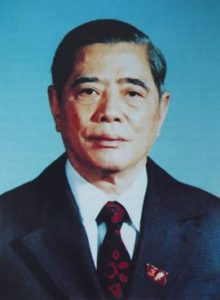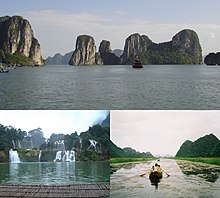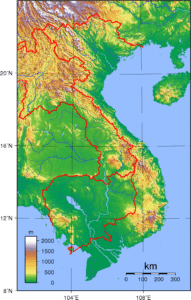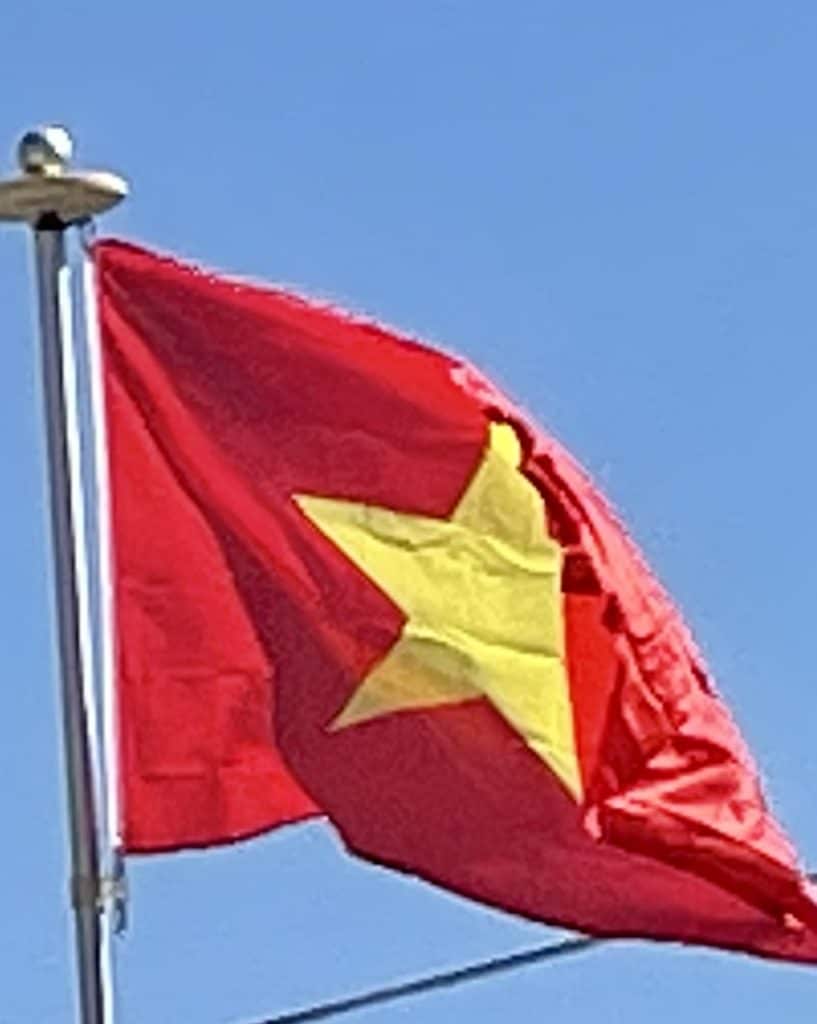
At the Sixth National Congress of the Communist Party of Vietnam (CPV) in December 1986, reformist politicians replaced the “old guard” government with new leadership. The reformers were led by 71-year-old Nguyễn Văn Linh, who became the party’s new general secretary. He and the reformers implemented a series of free-market reforms known as Đổi Mới (“Renovation”) that carefully managed the transition from a planned economy to a “socialist-oriented market economy“. Though the authority of the state remained unchallenged under Đổi Mới, the government encouraged private ownership of farms and factories, economic deregulation, and foreign investment, while maintaining control over strategic industries. The Vietnamese economy subsequently achieved strong growth in agricultural and industrial production, construction, exports, and foreign investment, although these reforms also caused a rise in income inequality and gender disparities.
Geography

Vietnam is located on the eastern Indochinese Peninsula between the latitudes 8° and 24°N, and the longitudes 102° and 110°E. It covers a total area of approximately 331,212 km2 (127,882 sq mi). The combined length of the country’s land boundaries is 4,639 km (2,883 mi), and its coastline is 3,444 km (2,140 mi) long. At its narrowest point in the central Quảng Bình Province, the country is as little as 50 kilometres (31 mi) across, though it widens to around 600 kilometres (370 mi) in the north. Vietnam’s land is mostly hilly and densely forested, with level land covering no more than 20%. Mountains account for 40% of the country’s land area, and tropical forests cover around 42%. The Red River Delta in the north, a flat, roughly triangular region covering 15,000 km2 (5,792 sq mi), is smaller but more intensely developed and more densely populated than the Mekong River Delta in the south. Once an inlet of the Gulf of Tonkin, it has been filled in over the millennia by riverine alluvial deposits. The delta, covering about 40,000 km2 (15,444 sq mi), is a low-level plain no more than 3 meters (9.8 ft) above sea level at any point. It is crisscrossed by a maze of rivers and canals, which carry so much sediment that the delta advances 60 to 80 meters (196.9 to 262.5 ft) into the sea every year. The exclusive economic zone of Vietnam covers 417,663 km2 (161,261 sq mi) in the South China Sea.

Southern Vietnam is divided into coastal lowlands, the mountains of the Annamite Range, and extensive forests. Comprising five relatively flat plateaus of basalt soil, the highlands account for 16% of the country’s arable land and 22% of its total forested land. The soil in much of the southern part of Vietnam is relatively low in nutrients as a result of intense cultivation. Several minor earthquakes have been recorded in the past. Most have occurred near the northern Vietnamese border in the provinces of Điện Biên, Lào Cai and Sơn La, while some have been recorded offshore of the central part of the country. The northern part of the country consists mostly of highlands and the Red River Delta. Fansipan (also known as Phan Xi Păng), which is located in Lào Cai Province, is the highest mountain in Vietnam, standing 3,143 m (10,312 ft) high. From north to south Vietnam, the country also has numerous islands; Phú Quốc is the largest. The Hang Sơn Đoòng Cave is considered the largest known cave passage in the world since its discovery in 2009. The Ba Bể Lake and Mekong River are the largest lake and longest river in the country.
Economy:
Throughout the history of Vietnam, its economy has been based largely on agriculture—primarily wet rice cultivation. Bauxite, an important material in the production of aluminum, is mined in central Vietnam. Since reunification, the country’s economy is shaped primarily by the CPV through Five Year Plans decided upon at the plenary sessions of the Central Committee and national congresses. The collectivization of farms, factories, and capital goods was carried out as part of the establishment of central planning, with millions of people working for state enterprises. Under strict state control, Vietnam’s economy continued to be plagued by inefficiency, corruption in state-owned enterprises, poor quality and underproduction. With the decline in economic aid from its main trading partner, the Soviet Union, following the erosion of the Eastern bloc in the late 1980s, and the subsequent collapse of the Soviet Union, as well as the negative impacts of the post-war trade embargo imposed by the United States, Vietnam began to liberalize its trade by devaluing its exchange rate to increase exports and embarked on a policy of economic development.
